When Minutes Become a Weapon: How Lorain City Council Published False Records Twice After Being Shown the Truth
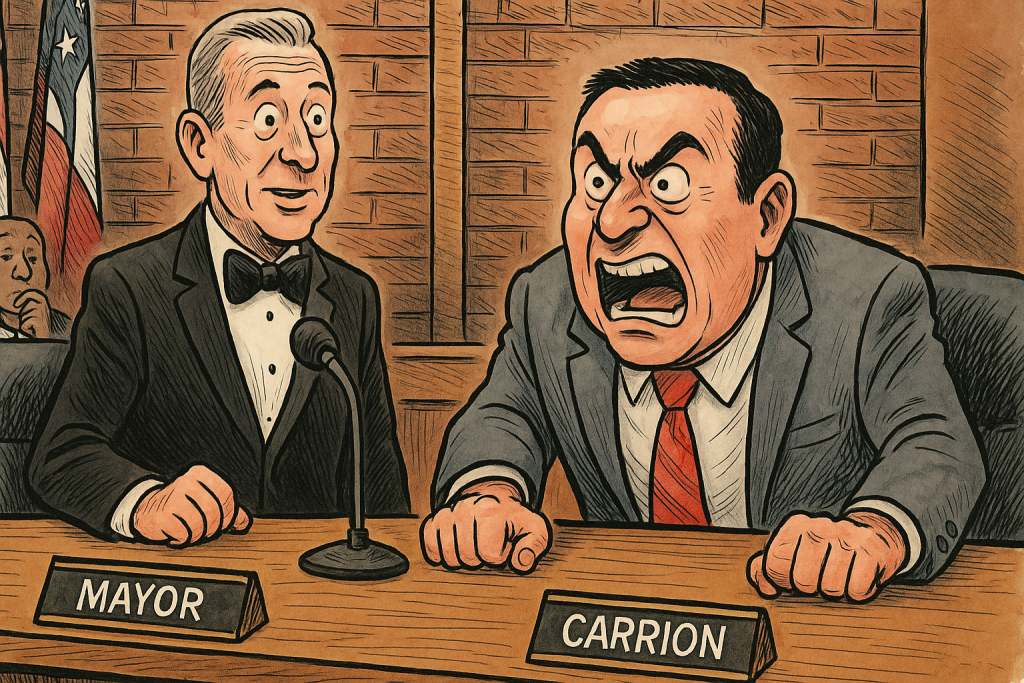
By Aaron Christopher Knapp
Investigative Journalist, AaronKnappUnplugged.com
Introduction
Public meeting minutes are supposed to document what actually happened inside the people’s chamber. They are not supposed to be rewritten to protect a city official’s misconduct or to smear the resident who was targeted. Yet that is what happened on October 20, 2025, inside Lorain City Council Chambers, when the City of Lorain twice published minutes that removed the initiating conduct of Safety Service Director Rey Carrion and left only my responses, creating a defamatory and misleading narrative.
The truth is not in dispute. It was captured on audio. It was recorded on body camera. It was witnessed by people seated all around the room. I submitted a formal complaint. I submitted a formal legal notice. I provided both audio files, including the one where Carrion clearly yells “Did you say something” three separate times. I notified the Clerk that minutes must reflect what happens during the gavel in meeting. I notified Council. I notified City Hall officials.
Despite all of this, the City published the same false version again. The official record now reflects a knowingly altered narrative that slanders a private citizen. This is no longer a question of clerical error. It is evidence of intent.
Context: A Lawsuit Already Filed Against the City and Its Officials
Before the October 20 minutes were altered, I had already filed a lawsuit naming the City of Lorain, Safety Service Director Rey Carrion, Mayor Jack Bradley, Law Director Joseph LaVeck, and former Police Chief James McCann. The suit alleges retaliation, misconduct, violations of public records law, and unconstitutional treatment by multiple city officials over a period of several years. That litigation was active at the time the minutes were produced and approved.
Every person whose conduct I documented in that lawsuit either sat at the table during the October 20 meeting or was directly implicated in the resulting minutes and communications. The same names keep appearing: Carrion, Bradley, LaVeck, McCann, and the City itself.
The City altered minutes involving the same officials I am suing. That makes this act look retaliatory, not clerical.
When a citizen files suit against a city and its leadership, and then a city official triggers a confrontation during a public meeting, and then the official minutes are edited to make the citizen look like the aggressor, the pattern becomes difficult to ignore. The altered minutes do not just distort the truth. They conveniently support the defense interests of the very officials who are being sued. That is not a neutral error. It carries the appearance of retaliation written into the public record.
What Actually Happened: The Audio Tells the Story
Before any escalation, I turned quietly to Garon Petty, who was seated immediately to my right, and asked:
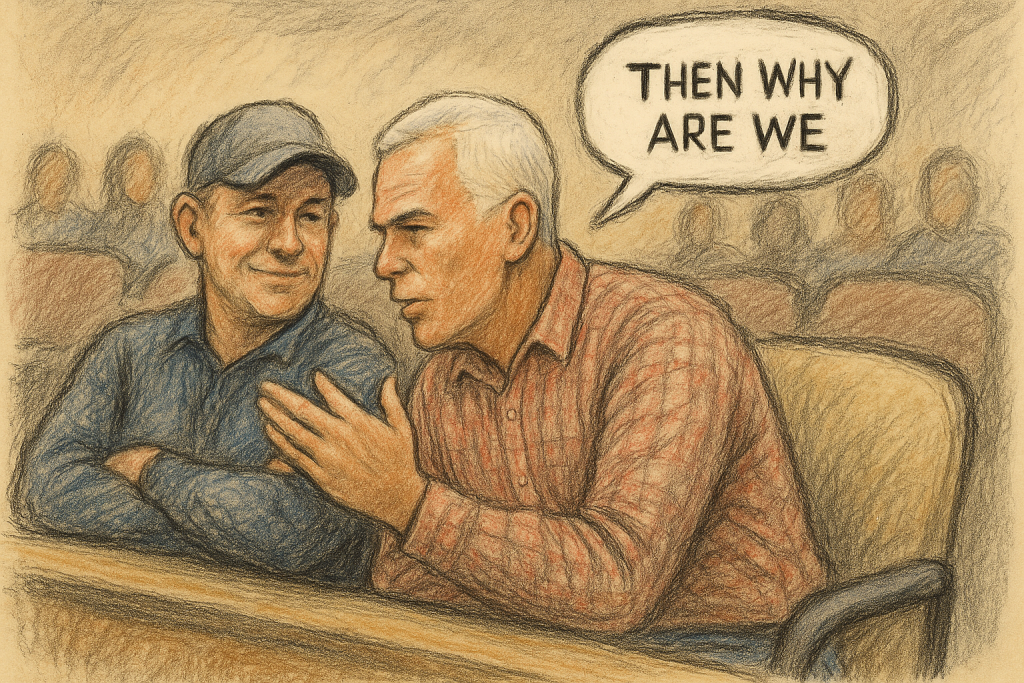
“Then why are we?”
My phone was resting on the table, not in my hand. My remark was quiet. The microphone barely picked it up. What came next was not quiet.
While holding the floor and speaking from inside the council circle, Safety Service Director Rey Carrion suddenly raised his voice and yelled across the room toward me:
“Did you say something.”
“Did you say something.”
“Did you say something.”
This escalation is captured clearly on my personal audio recording and even more clearly on body camera footage. I responded softly at first:
“Then why are we?”
Carrion continued yelling. After he repeated himself and maintained his aggressive tone, I raised my voice to match the situation and replied again:
“Then why are we?”
Only after being shouted at multiple times by a city official did I say:
“You work for me, Carrion.”
At the same time, the recording captures Councilmember Mary Springowski attempting to stop him. You can hear her voice clearly saying:
“Rey… Rey… Rey…”
That is what occurred. It is not conjecture. It is not interpretation. It is not hearsay. It is recorded, twice, from two independent sources.
The audio and body camera show the employee initiated the confrontation, not the citizen.

What the City Published Instead, Twice
The City published two versions of the minutes. The first version was labeled draft. The second version was labeled amended. Both versions contained the same core distortion. This is what they chose to put into the official record:
AUDIENCE MEMBER (AARON KNAPP): Then why are we.
AUDIENCE MEMBER (AARON KNAPP): ______ you work for me, Carrion.
PRESIDENT ARREDONDO: Mr. Knapp, let us have it cease.
AUDIENCE MEMBER (AARON KNAPP): No, your employee is addressing me, sir.
PRESIDENT ARREDONDO: Cease.
AUDIENCE MEMBER (AARON KNAPP): No.
That is the version the City published, not once, but twice. Completely missing are:
- My quiet remark to Petty.
- All three times Carrion yelled, “Did you say something.”
- His escalating tone and volume.
- Springowski trying to calm him down.
- The fact that my response was invited and provoked.
- The fact that the employee, not the citizen, created the disruption.

The result is that the minutes portray me as erupting for no reason, as if I simply decided to attack a city official in the middle of a meeting. The employee’s conduct is erased. The citizen’s conduct is preserved and isolated. Meaning is reversed.
They removed his words and kept mine. That is not documentation. That is narrative construction.
The City’s Illegal Fix: Removing What Happened and Adding What Cannot Be Included
In the amended minutes, the City tried to patch over what it had removed by inserting a new line about recess:
“The events that occurred in the Council Chamber during recess were recorded and are available upon request.”
On its face, that might sound like transparency. Legally, it is the opposite.
Under R.C. 121.22(C), minutes must include a record of the actions taken at the meeting. The meeting refers to the open, gavel in session. The Ohio Attorney General’s Open Meetings Act manual clarifies that conversations before a meeting is convened, after it is adjourned, or during a recess are not part of the meeting and are not to be included in the minutes at all.
Recess is a pause. The public body is not in official session during that time. Events during recess are not part of the minutes. Yet the City removed the accurate portion that occurred during the open meeting and added a reference to recess, which cannot lawfully be summarized in the minutes.
In doing so, the City:
- Removed content that must be included under R.C. 121.22(C).
- Added content that should not appear in the minutes at all.
R.C. 149.43(B)(1) prohibits any public office from altering a public record in order to conceal or misrepresent the record. The Open Meetings Act manual further warns that a public body may not edit or reconstruct minutes in a way that changes the meaning of what actually occurred. Removing the initiating conduct of a city official and retaining only the responses of the citizen does exactly that.
The City removed the truth and replaced it with material that cannot legally be included at all.
My Formal Complaint on Carrion’s Conduct
Immediately after the incident, I submitted a formal complaint regarding Carrion’s conduct. That complaint described what happened inside council chambers, the impact on my safety, and my request for equal treatment under the law. It read as follows:
I am submitting this formal complaint regarding an incident that occurred during a public meeting on 10/21/2025 at Lorain City Hall council chambers.
During the meeting, Safety Service Director Rey Carrion became visibly angry and yelled at me from inside the council circle while holding the floor. His aggressive shouting, including demanding if I “had something to say,” made me fear for my safety. Mr. Carrion’s physical presence and hostile behavior were intimidating and caused me significant distress. Carrion would be seen being consoled by the Mayor, he was rubbed on the back to calm down and faces away from the crowd, visibly angry and upset. This is unacceptable from the man who is supposed to be in charge of building safety. All of this is audio and video recorded. I will expect you to reach as quickly as you did Garon.
Following this, Joel and other staff repeatedly attempted to call me out over the microphone, despite knowing I suffer from fight or flight PTSD, which causes me to freeze when confronted. Their persistent public confrontation made it impossible for me to leave the meeting safely at that time.
The actions of Mr. Carrion and the others disrupted the meeting, forced the City Council to suspend the session, and created a threatening and hostile environment. Despite attempts by the council to restore order and clear the room, Mr. Carrion refused to cooperate and prevent further escalation.
Given the serious nature of these actions and their impact on my safety and well being, I respectfully request that charges similar to those previously brought against others in disturbance cases be considered against Mr. Carrion and those involved.
I am prepared to provide detailed statements, witness names, and any additional evidence needed to support this complaint.
Thank you for your prompt attention to this matter. I will also expect a special prosecutor.
Sincerely,
Aaron Christopher Knapp, LSW, BSSW
Follow Up Email to City Officials
The following morning, I sent a follow up email that made my expectations clear.
You charged Garon almost the next day. I will be coming to city hall to file an official police report and complaint. I expect the same treatment you gave Breanna when she was “scared”.
Signed,
Aaron Christopher Knapp, LSW, CDCA(p), BSSW
I asked for the same treatment they gave other complainants. Instead, they rewrote the record to make me the problem.
Final Notice Before Filing: My Letter to the Clerk and Council
When the draft minutes came out and already misrepresented the events, I sent a final notice before filing suit. That letter stated:
Final Notice Before Filing – Correction of October 20, 2025 Council Minutes
Dear Clerk Dull and Members of Lorain City Council,
As of today, I have received no response to my written request dated October 21, 2025, concerning the inaccuracies and false statements contained in the draft minutes of the October 20, 2025 Council meeting.
Attached for your review is a draft Verified Complaint prepared for filing in the Lorain County Court of Common Pleas. The complaint outlines multiple statutory violations under R.C. 121.22 (Open Meetings Act) and R.C. 149.43 (Public Records Act), as well as a defamation claim based on the publication of false statements in the official minutes.
To be clear, I do not object to accurate documentation of public proceedings. My concern lies with the inclusion of statements and characterizations that are demonstrably false and with references to conversations that occurred after the meeting was recessed, which are not part of the lawful record under R.C. 121.22(H).
This correspondence serves as formal notice and an opportunity for voluntary correction prior to filing. Should Council approve the October 20 minutes tonight without amendment or clarification, I will proceed with immediate filing of the attached Verified Complaint, together with an Affidavit of Indigency and all supporting exhibits.
I respectfully urge the Council to ensure that its official records reflect only what transpired during the open session, as required by Ohio law. Transparency, accuracy, and fairness are not adversarial principles, they are the foundation of public trust.
Respectfully,
Aaron C. Knapp
Citizen, City of Lorain
4220 Talbot Lane
Lorain, Ohio 44055
Conclusion: Retaliation Written Into the Public Record
When you line up all of the facts, the pattern is hard to ignore.
- I filed a lawsuit against the City, Carrion, Bradley, LaVeck, and McCann.
- During a public meeting, Carrion initiated a confrontation by yelling at me from inside the council circle.
- Audio and body camera recordings prove the sequence beyond dispute.
- I filed a formal complaint and requested that charges be considered against Carrion.
- The City then published minutes that erased his conduct and preserved only mine.
- After being given notice and evidence, the City published essentially the same false version again.
When a city alters the public record involving the same officials it is being sued by, the motive speaks for itself.
This is not a neutral mistake. It benefits the defendants in my lawsuit. It harms me as the plaintiff. It misleads the public. It rewrites the history of a public meeting in a way that protects the powerful and targets the resident who challenged them.
Under Ohio law, this conduct implicates the Open Meetings Act, the Public Records Act, and the law of defamation. When a city government knowingly publishes false statements about a resident in its official minutes, especially after being given proof and formal notice, it crosses a line that cannot be ignored.
I have now been slandered twice in the official minutes of Lorain City Council. The City was given the opportunity to correct the record. It refused. Instead, it chose to stand on a narrative that is directly contradicted by its own recordings.
At this point, I have only one option left. The option is to file.
A recent claim suggests that because I quietly spoke to another audience member, the Safety-Service Director had the right to confront me and demand to know whether I “had something to say.”
That is completely incorrect under Ohio law, statutory municipal structure, and Robert’s Rules of Order.
This is not vaudeville, and a city administrator does not get to interrogate private citizens during a public meeting.
OHIO OPEN MEETINGS LAW
R.C. 121.22 (Ohio Open Meetings Act) grants the public the right to:
“Attend and observe” public meetings.
It does not require audience members to address the body.
It does not grant executive officials the authority to interrupt and interrogate observers who are not causing a disruption.
STATUTORY CITIES – AUTHORITY STRUCTURE
Because Lorain is a statutory city, power flows from:
- Ohio Revised Code
- Council’s own adopted rules
- Robert’s Rules of Order (where rules are silent)
There is no charter provision granting the Safety-Service Director power to address audience members at will.
ROBERT’S RULES OF ORDER (12th Ed.)
Only the presiding officer may recognize speakers.
Members must address remarks through the chair.
Members may not directly question or challenge someone who has not been recognized.
The chair, not a department head, determines who may speak.
THE CLAIM
Matthew Stead argued:
“Since you whispered first to Garon, that gave Carrion the right to address you.”
That is legally, procedurally, and logically false.
Private conversation between two citizens does not create a license for an official to confront them.
If it did, every whisper in the audience could be treated as justification for government interrogation.
That is not how First Amendment public forum law works.
FOR THE RECORD
Stead also claimed:
“You stood up aggressively, pointed, and yelled ‘CARRION YOU WORK FOR ME!’”
The video proves:
✔ I remained seated
✔ I did not point
✔ I did not yell
✔ The only aggressive tone came from the dais
Anyone insisting otherwise should produce timestamps, not stories.
BOTTOM LINE
📌 Whispering to another audience member is not a disruption
📌 An official confronting citizens without recognition is a violation of parliamentary procedure
📌 No section of Ohio Revised Code, council rules, or Robert’s Rules supports Stead’s claim
Until someone can cite a law:
This is just another episode of “Typical delusional Karon Krapp…”
Now with receipts.
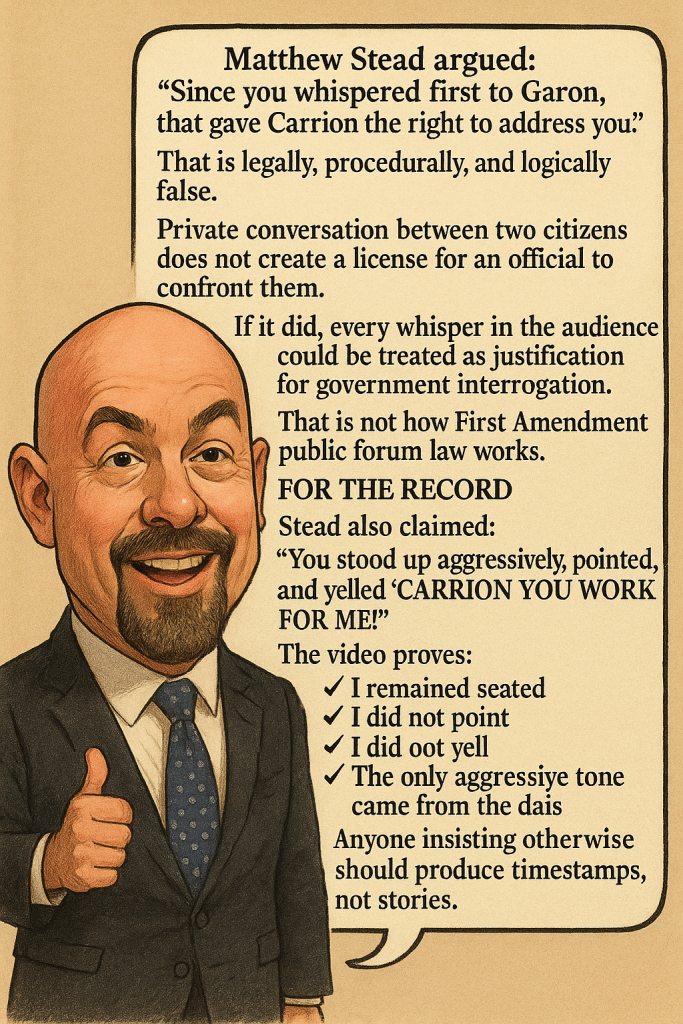



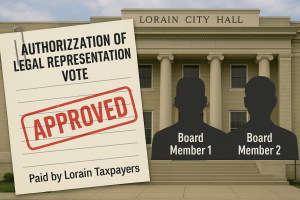

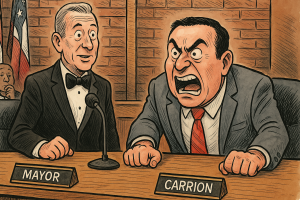
The Council minutes should be accurately prepared truthfully to reflect TRUTH.
The Clerk has explaining to do:
The editing she has been caught doing is in need of explanation.